How to feed cabbage after planting?
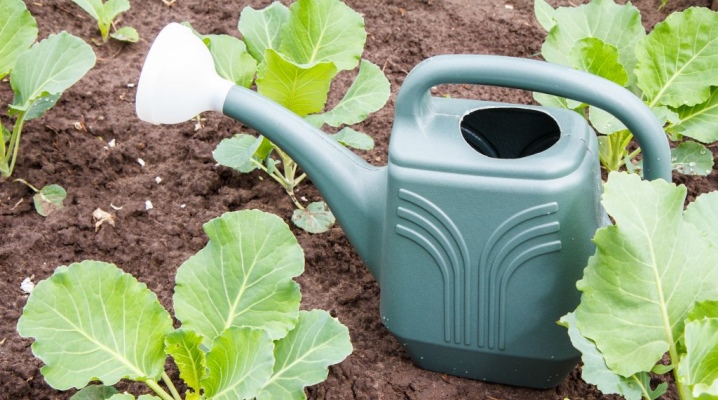
To get a good harvest of cabbage, you need to provide this crop with all the necessary elements. For this, the plant must be regularly fed with organic and mineral products.
First feeding
For the first time, you need to feed the cabbage immediately after planting the seedlings in the ground. Indeed, during this period, she begins to actively gain green mass. Therefore, it is very important that the plant receives nitrogen at this stage. Fertilizers can be applied after 2 weeks. At this stage, you can use the following minerals:
- ammonium nitrate (25 grams per 1 bucket of water);
- carbonate (35 grams per 1 bucket of water);
- superphosphate (30 grams per 10 liters of water).
And you can also apply organic fertilizers. Manure and poultry manure are best suited for this purpose, as they contain a lot of nitrogen.
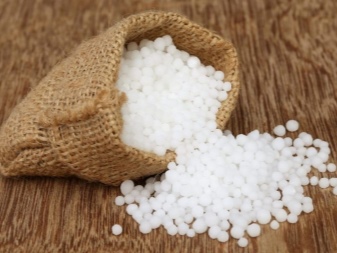
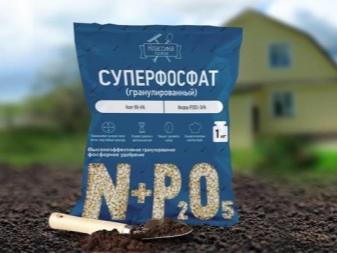
There are several simple top dressing recipes that you can use.
From manure
This substance is absorbed very quickly, which is important when growing cabbage. In addition, in addition to nitrogen, manure also contains substances such as calcium, iron and sulfur.
To prepare the solution, you will need to pour 5 kilograms of manure with 10 liters of water. Next, the mixture must be mixed well and infused for 7 days. After this period, you need to take 1 liter of the solution and mix it with two buckets of water. After that, it is necessary to pour 0.5 liters of the prepared mixture under each cabbage bush.
If desired, you can add 125 grams of superphosphate to the solution. This will strengthen the root system of plants and increase their immunity.
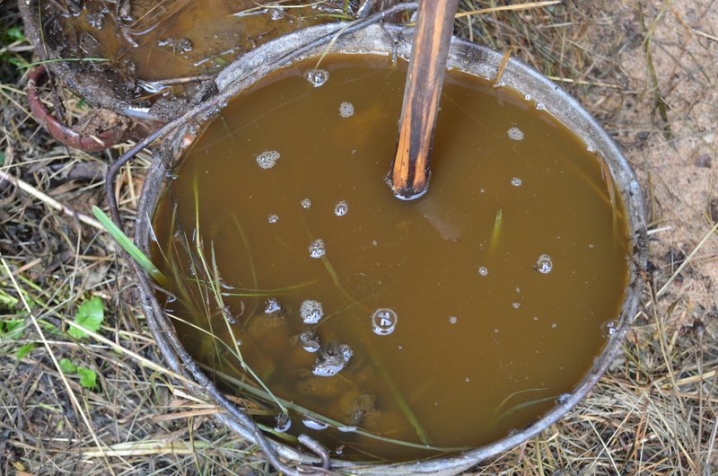
Chicken droppings
This product is rarely used in its pure form. As a rule, it is diluted with plenty of water. If the droppings are fresh, use 3 kilograms of this substance for 1 bucket of water. Old litter is diluted in 10 liters of liquid.
The finished mixture must be infused for 5-6 days. After this period, you need to take 1 liter of solution and dilute it in 1 bucket of water. Pour 0.5 liters of the mixture under each bush.
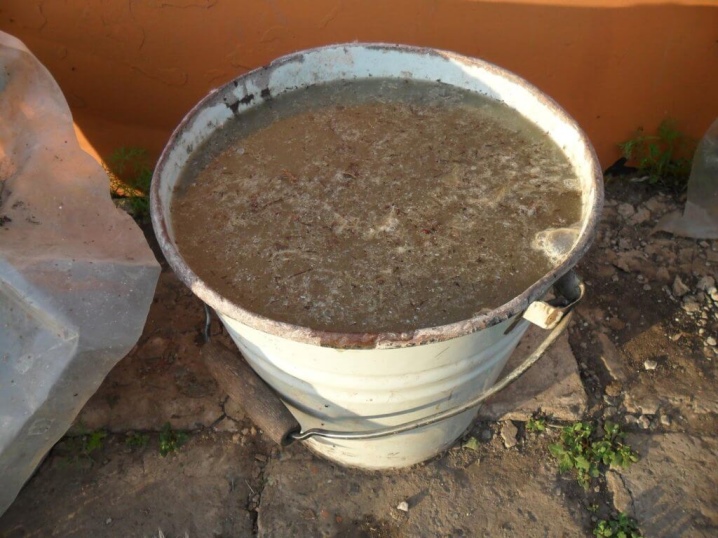
From ammonia
To fertilize cabbage, you can also use a solution with ammonia. To prepare it, you need to mix 0.1 liters of ammonia with 1 bucket of water. Further, under each plant, it is necessary to pour 150 milliliters of the finished mixture.
It is imperative to observe the dosage and not exceed the norm. You can repeat feeding in 3-4 days.
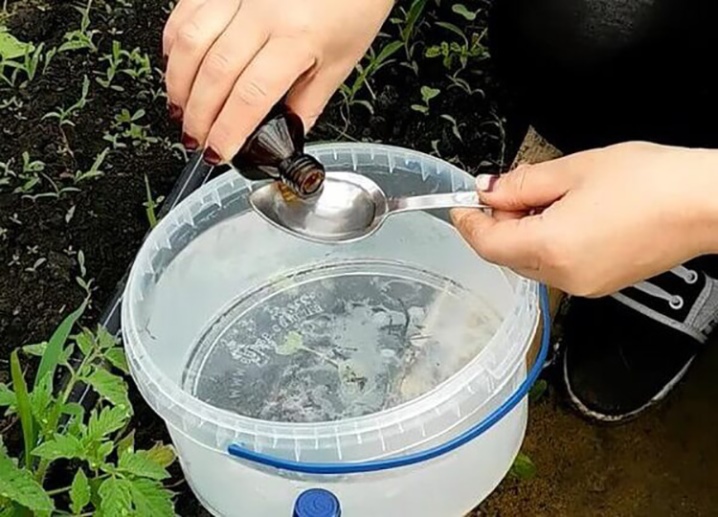
Eggshell
This product is also actively used by gardeners for feeding cabbage. To prepare egg shell feeding, it must be very well dried and turned into powder using a rolling pin or an ordinary bottle.
Then this powder must be poured with 1 liter of boiled water and left to infuse for 1 week. From time to time, the mixture must be shaken. After 7 days, add 3 liters of water to the solution and mix. The finished mixture must be poured over each cabbage bush.
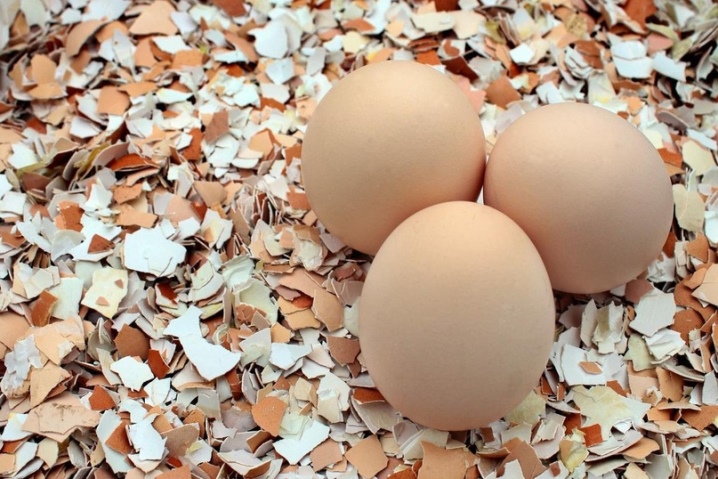
From hydrogen peroxide
Immediately after planting seedlings in open ground, you need to saturate it with oxygen. To do this, you can use a product such as hydrogen peroxide. To prepare top dressing, it is enough to add 1 glass of this substance to 1 bucket of water and mix everything thoroughly. Water the cabbage at the root.
In order not to harm the fragile root system, it is necessary to always water the soil with warm water before applying fertilizers.

How to feed a second time?
The second feeding should be done only 1 month after planting the plant in the garden. During this period, cabbage, in addition to nitrogen, will need phosphorus. Therefore, it is worth choosing the appropriate fertilizers.
Wood ash
This product includes a whole range of nutrients necessary for the full development of a plant. Wood ash can be simply placed in open ground. But it is much more effective to use it as part of various mixtures.
To prepare the solution, pour 1 liter of boiled water into a ¼ liter can of ash. Then you need to let the mixture brew for 4-5 days. After that, you need to dilute it with 1 bucket of water. Under each bush, 1 liter of the finished solution is poured.
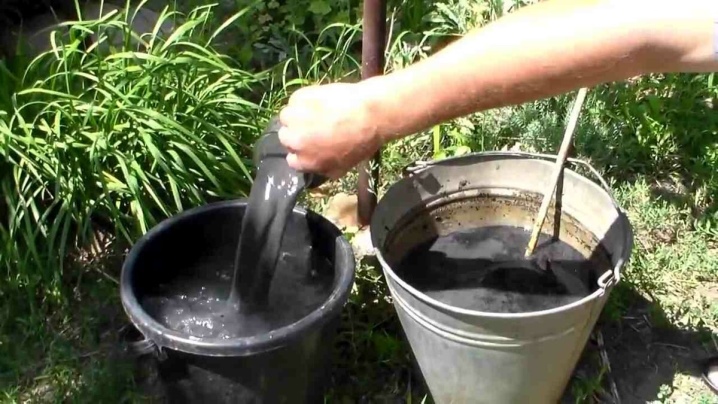
Yeast
This substance will help provide cabbage with the vitamins it needs, as well as amino acids. To prepare the mixture, you will need the following components:
- 2 tbsp. l. granulated sugar;
- 2 tbsp. l. dry yeast;
- 1 liter of clean water.
Cooking method:
- first, the yeast must be diluted in water at room temperature;
- then you need to add granulated sugar there, mix everything thoroughly;
- then you need to let the mixture brew for 1 week;
- after this period, the solution must be poured into 1 bucket of water and mixed again;
- after that, you need to water each cabbage bush with 1 liter of solution.
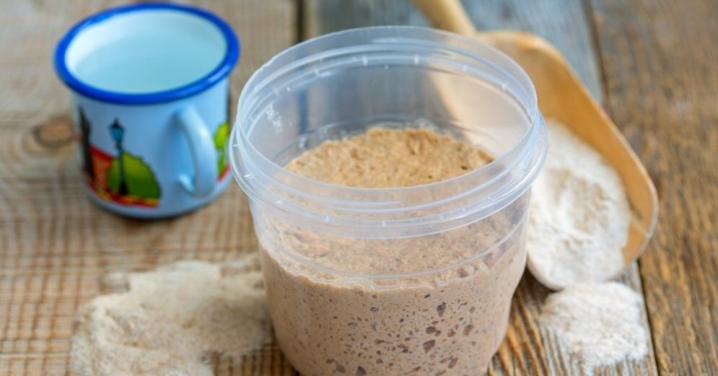
Boric acid
In order for cabbage heads to be larger and denser, the plant should be fed with a solution of boric acid. To prepare the necessary mixture, you will need 5 grams of boric acid, pour 1 glass of boiled water. Then everything must be mixed well and poured into a container with 10 liters of water. It is best to apply top dressing by foliar method.
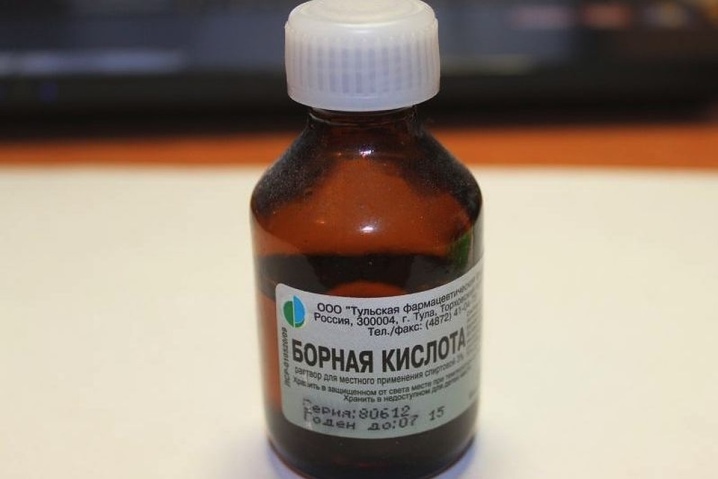
Potato peelings
To prepare such a mixture, it is necessary to pour 3 kilograms of potato peelings into a container prepared in advance. Then they must be poured with 10 liters of boiled water and left to infuse for several days, stirring from time to time. The finished infusion must be filtered, and then pour 200 grams of the mixture under each bush.
Potato peelings are rich in phosphorus and potassium. Therefore, such a solution has an excellent effect on the development of young cabbage.
After applying top dressing at this stage, it is imperative to spud the cabbage.
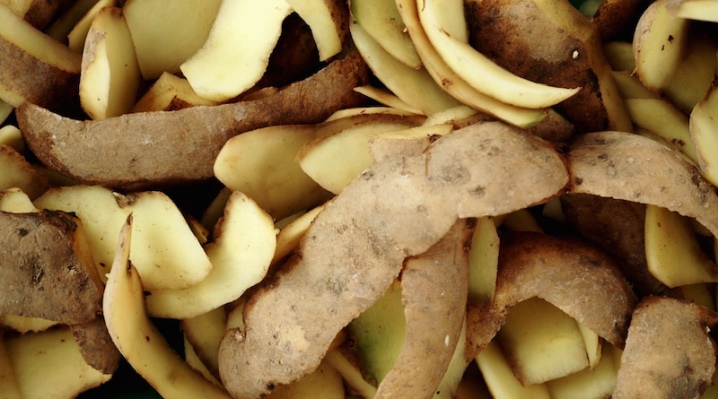
Subsequent procedures
The third and fourth feeding is unnecessary. However, many gardeners apply fertilizers to stimulate the setting of heads, improve the flavor of the cabbage leaves and make them more juicy.
Third
For the third time, top dressing is applied 2 weeks after the second. It is best to water the cabbage at the root in the morning or evening. At this stage, you can use folk remedies.
- Potassium permanganate. For feeding cabbage, it is worth using a weak solution of potassium permanganate. To prepare it, add 3 grams of the product to 1 bucket of water. Then everything must be mixed well. After that, the solution can be used as directed.
- Iodine. This remedy will make the heads of cabbage larger and juicier. In addition, cabbage processed in this way will be stored much longer. To prepare the mixture, you need to take a 10-liter bucket of water, add 35 drops of iodine to it and mix everything thoroughly. It should be noted that the mixture can also be used for spraying. However, in this case, the solution should not be as concentrated. 15 drops of iodine are added to one bucket of water.
It is best to process plants immediately after rain or early in the morning, when there is still dew.

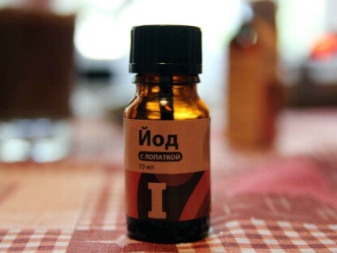
Fourth
The last dressing should be applied 2-3 weeks before the cabbage harvest begins. It is made so that the cut heads are stored longer. Experienced gardeners recommend using time-tested solutions.
- Nettle. To prepare such a mixture, you can use both the leaves and roots of the nettle. They need to be crushed well. Then you need to put everything in a container prepared in advance and fill it with clean water. Next, you need to let the mixture brew. It will take 4-6 days. The finished solution must be filtered and diluted in water. 1 bucket of water will take 1 liter of tincture. Each cabbage bush is watered with two liters of the resulting solution.
- A solution of yeast and jam. To prepare such a useful top dressing, 10 liters of water must be combined with 300 g of pressed yeast and 500 ml of jam. You can even use a sour product for this purpose. The resulting mixture must be mixed and removed to a dark place for 8-10 days. After that, the product must be mixed with water in a 1: 3 ratio. You can use the solution for spraying or watering cabbage.
- Banana peel tincture. In addition to potassium, banana tops contain a lot of phosphorus, as well as other trace elements. To make such a mixture, you need to take a 10-liter container of hot water and about 18 banana skins. All this should be insisted for at least 4 days. Further, the tincture must be filtered and diluted with water in a ratio of 1: 3. After that, you need to pour 1 liter of the mixture under each plant.
- Soda. The soda mixture will protect cabbage heads from cracking, and will also significantly increase their shelf life. It is prepared very simply. Ten liters of water is mixed with two tablespoons of baking soda. The solution is used immediately after preparation.
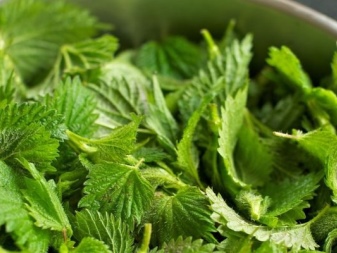
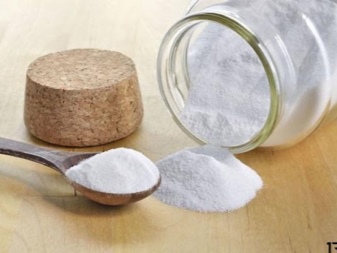
Some late-ripening cabbage varieties require additional feeding. They need to be brought in no more than 2 times a week. You can understand that cabbage needs feeding by the appearance of the leaves.
- If the leaves turn yellow, and then begin to dry out and fall off, this means that the plant does not have enough nitrogen. This is also evidenced by the small size of the head of cabbage.
- When the edges of the leaves become corrugated, and the leaves themselves are pale, it is worth using fertilizers rich in potassium.
- The appearance of white spots on the edges of the leaves indicates a lack of calcium. Over time, such a plant dries up.
- If the foliage darkens and takes on a rich emerald hue, the cabbage lacks phosphorus. The lack of this element is also indicated by the bright purple edges of the leaves and the bulges on their outer side.
- Slow growth of cabbage and lack of ovaries are signs of boron deficiency. If the plant lacks this element, it will be poorly stored in winter.
Having noticed such changes, it is necessary to immediately address this problem.
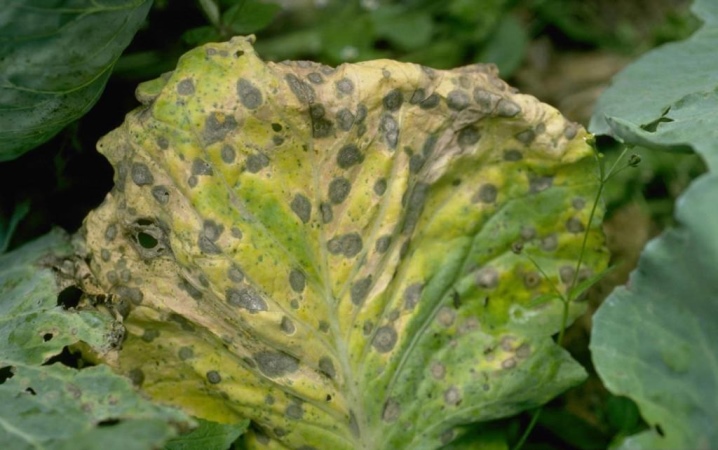
If you use high-quality top dressing at every stage of cabbage growth, then the crop will pleasantly please with its quality and will be stored much longer than usual.
For information on how to feed cabbage, see the next video.













The comment was sent successfully.